#Wilcox County
Text
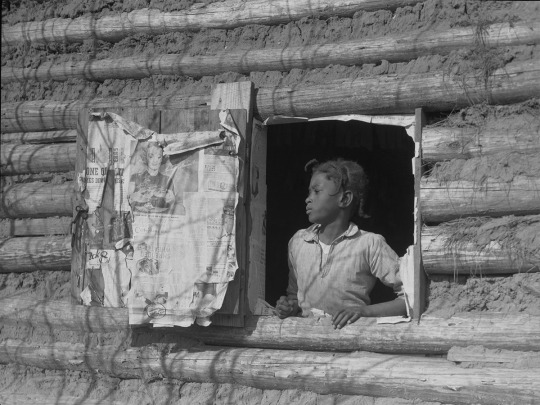
April 1937 "Girl at Gee's Bend. Descendants of slaves of the Pettway family are still living very primitively on the plantation." Wilcox County, Alabama (Caption from Shorpy)
Photo: Arthur Rothstein
View full size
70 notes
·
View notes
Text
American Auto Trail-Dixie Highway (Abbeville to Hawkinsville GA)
American Auto Trail-Dixie Highway (Abbeville to Hawkinsville GA)
https://youtu.be/ksFNF3188nk
This American auto trail explores a section of the 1920s Dixie Highway from Abbeville to Hawkinsville, Georgia.

View On WordPress
#4K#Abbeville#american history#Andrew Jackson#Auto trail#Bleckley County#dixie highway#Enduring Farmlands#georgia#Hawkinsville#Jefferson Davis#Pulaski County#road travel#slow travel#Wilcox County
1 note
·
View note
Text
Snow Hill Church-Pitts, Georgia
Snow Hill Church-Pitts, Georgia
I happened to drive by this church on one of my road trips. On the map, it was identified as Snow Hill Church. In my research, I found reference to a church in Wilcox County named Snow Hill that started in 1899, but that was all the info I was able to find.
My friend Brian had it identified as a school first. I was unable to confirm this information. If anyone has more information, please share.

View On WordPress
0 notes
Text
When Utah Leaders say that taxpayers "will not" pay for a ballpark, they mean that $900 million taxpayer dollars will be used
Over the last few months, more and more stories have been popping up online that discuss whether Salt Lake City or the state of Utah should build a ballpark for some future MLB expansion team. Utah residents have therefore been asking local leaders who exactly would be paying for such a project. Rep. Ryan Wilcox, R-Ogden, has an answer. He wants residents to know that “local taxpayers will not be…

View On WordPress
#Accommodations and Services Tax#Arlington TX#Atlanta Braves#Beach Renourishment#Clark County#Cobb County#Dallas Cowboys#Energy Sales and Use Tax#Fairpark Area Investment and Restoration District#General Fund#Hotel Taxes#JC Bradbury#Miami Marlins#MLB#Moody#Nevada#Property Tax#Resort Communities Sales and Use Tax#Room Tax#Ryan Wilcox#Salt Lake City#Stuart Adams#Tampa Bay#Tampa Bay Rays#Telecommunications License Tax#Texas#Tourist Taxes#Transient Room Tax#Utah#Utah State Legislature
0 notes
Text

Susana Allen Hunter, Pig Pen Variation and Mosaic Medallion Quilt, (cotton (textile), cotton (fiber), batting, flannel), Wilcox County, AL, 1950-1955 [The Henry Ford, Dearborn, MI]
296 notes
·
View notes
Text

New findings suggest more ocelots in Texas than previously thought
Approximately 100 ocelots have been documented in South Texas.
The results of a recent DNA test on an ocelot found dead three years ago in Hidalgo County suggests there may be more of the endangered wildcats in Texas than previously thought.
Scientists studying samples collected from a male ocelot that had been killed after being hit by a car along Highway 281 in 2021, determined the feline was not only related to breeding populations in deep South Texas but also shared the same DNA as ocelots found in northeast Mexico.
It's the first time that an ocelot has been found outside of its known range in the U.S., according to Tom DeMaar, former Gladys Porter Zoo veterinarian. "It makes you wonder; how many more ocelots are hidden out there?" DeMaar, who is also a member of the board of directors for Friends of Laguna Atascosa National Wildlife Refuge, said in a statement.
Approximately 100 ocelots have been documented in South Texas between Laguna Atascosa Wildlife Refuge in Cameron County and private lands in Willacy County, according to Defenders of Wildlife, a U.S. conservation organization.
"The results suggest that this cat possibly occupies a region of South Texas not yet known to ocelot researchers," said Sharon Wilcox, senior Texas representative for Defenders of Wildlife, in a statement. "Hidalgo County may have more ocelots present in its more remote sections where appropriate habitat and access to prey exists." ...
Read more: https://www.chron.com/life/wildlife/article/texas-ocelots-dna-test-19416448.php
58 notes
·
View notes
Photo




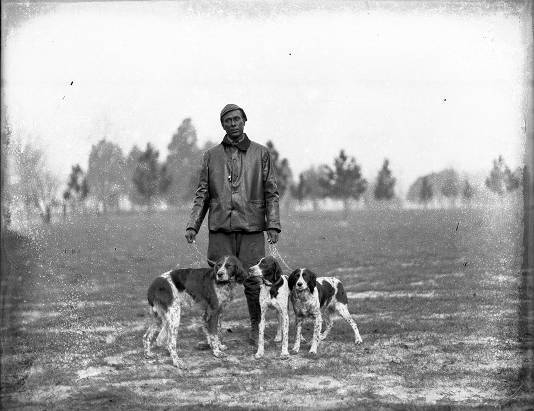




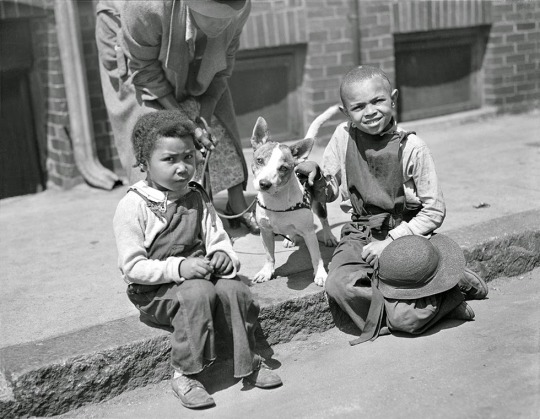
There’s a deeply rooted misconception that the only history that Black people have with dogs is a violent one. We recall the stories of slave patrols (the early prototype of our present law enforcement in the United States) enslaved people and free people of color through the swamps and forests with bloodhounds. Our minds turn to images of dogs being weaponized by white officers to intimidate and injure activists and community members. We reinforce narratives that nurture this haunted history of violence. But that is not the full story.
So here’s a little community history that show Black folk being pet parents and companions to furbabies~
- Bartel and Vashti Mosby, sitting together in front of their home with a small terrier in Lincoln, Nebraska (1910 - 1925)
- A young girl and elder stand on porch with cat (1928)
- Unidentified woman sitting with dog (1910)
- Children play with dog on the beach in Apalachicola, Florida (1895)
- A hunter stands with three hunting dogs in Georgia (1926)
- A mother surrounded by three children and a dog in rural Wilcox County, Alabama (1910-1919)
- A small child smiles down two dogs in Lincoln, Nebraska (1919-1925)
- At West Park Animal Hospital in West Philadelphia (born and raised~) a multi-racial team including Howard Krawitz and Whitfield Thompson (pictured) crafted a prosthetic cart for a puppo named Peanuts (1964)
- Two women at a picnic show off their smiling pitbull terrier (1910-25)
- Two children with dog in Boston, Massachusetts
Collection sourced from Florida Memory | Smithsonian | Library of Congress | New York Public Library | Nebraska Public Library | Boston Public Library
#for my afrofolio of period dramas#black history month#BlackExcellence365#people#our history is your history#yes i did make a fresh prince joke#in west philadelphia born and raised~
244 notes
·
View notes
Text

On February 1, 1887, Harvey Wilcox officially registered Hollywood with the Los Angeles County recorder’s office. #OnThisDay #Hollywood
21 notes
·
View notes
Text
Via the Louisiana Iris Conservation Initiative.







Louisiana irises are not the only irises native to the area. I am in lower alabama, and the species present here are:
Iris Virginica / southern blue flag iris is recorded in much of lower alabama.
Iris Verna /coastal plain iris is present seemingly throughout the state in long leaf pine forests and other ecosystems.
Iris Crista / crested iris is recorded in Monroe and Wilcox county, and may be in other lower Alabama counties.
———
For more information about Louisiana irises,
2 notes
·
View notes
Text
the title of this make it sound like he was producing klan content or mra shit
Among the videos referenced are one in which he walks through the halls of Bergen County Courthouse wearing a Beavis and Butt-Head T-shirt while Get Down by Nas is playing.
Many other videos contained him lip-syncing to explicit rap songs.
He's lip syncing rap music, that's the complaint
“The song contains explicit lyrics concerning a criminal case and a courtroom shooting as well as derogatory and discriminatory terms, drug and gang references, and the killing of a doctor in a hospital who treated another gang member,” the complaint says.
@chrisdornerfanclub @meanmisscharles @karpad
this is the judge who's behavior is objectionable
“By his conduct in posting these and similar videos to TikTok, (Wilcox) exhibited poor judgment and demonstrated disrespect for the Judiciary and an inability to conform to the high standards of conduct expected of judges,” the complaint stated.
not the multiple open bigots and various creeps, the rap lyric tiktok guy
7 notes
·
View notes
Text
some stuff from Victoria Wilcox The World of Doc Holliday book
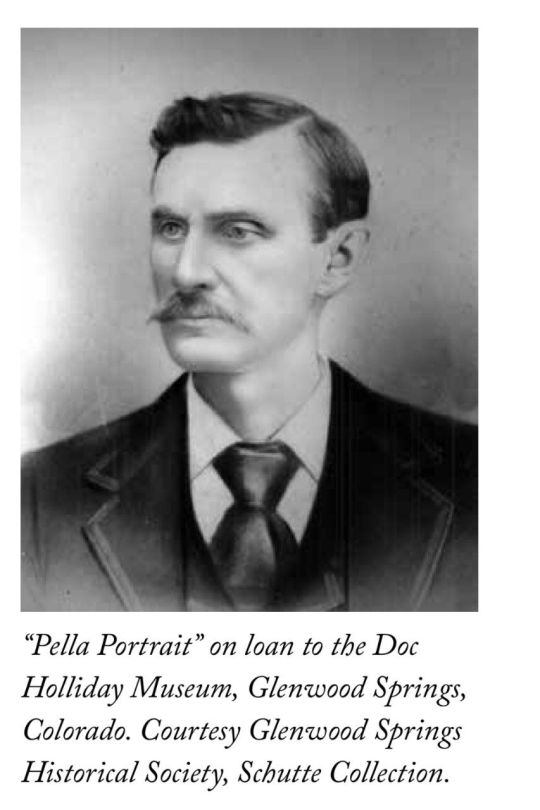
In the Doc Holliday Museum in Glenwood Springs, Colorado, hangs a sixty-by- twenty charcoal drawing mounted in a gold wood frame. The subject appears to be a man of early middle age, with a receding hairline, deep-set light-colored eyes, neatly trimmed mustache, square jaw and prominent ears, his thin face and narrow neck seeming out of proportion to his wide-collared jacket and large square-knot tie. According to antiques trader George Hettinga, the subject is thirty-four-year-old John Henry “Doc” Holliday as he appeared on a visit to Iowa in 1885.

THE HELL BITCH
When Tom McKey, John Henry’s favorite uncle, came home from the war, he brought an interesting souvenir with him: a giant knife he called the “Hell Bitch.” According to family stories, the knife had started out as a plowshare on the McKey family plantation at Indian Creek in Henry County, then was honed down to a meat cleaver for slaughtering hogs, then was honed down again to a fighting weapon when the war started.
The knife was fifteen inches long from swamp oak handle to tip, two inches wide across the blade, and more than one-quarter-inch thick, and kept in a specially made leather scabbard. Later stories of Doc Holliday’s Western adventures would mention a huge knife that he carried under his coat for protection when carrying a pistol wasn’t allowed. That knife may well have been the Hell Bitch, which disappeared when Doc fl ed Georgia, leaving behind the empty scabbard still showing the impression of the heavy knife that was once hidden inside.
19 notes
·
View notes
Text
DEADLY WOMEN DAILY: LINDA HAZZARD
Meet Linda Hazzard, a woman in the 1800’s who put the life of others in her hands, promising them proper treatment that would heal them from their sicknesses. However, her words would soon turn into lies, sealing the fate of at least 15 people, earning herself the title: “Starvation Doctor.” Let’s begin with her story.
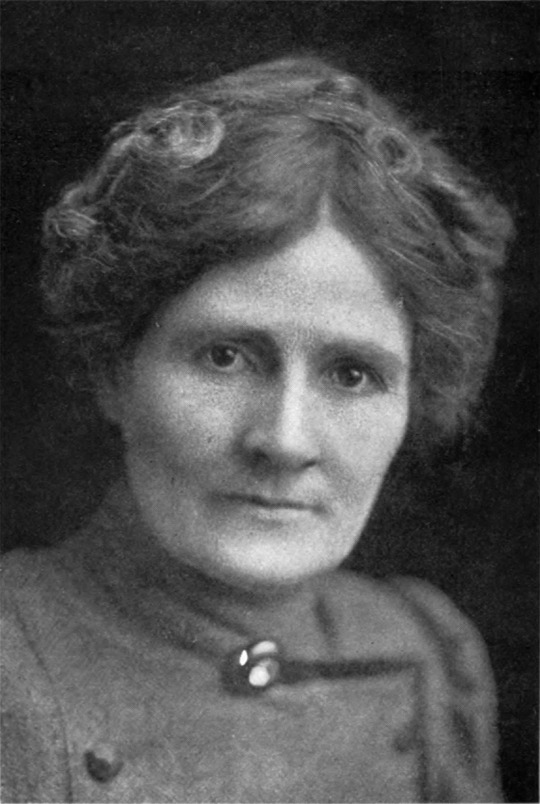
WHO WAS LINDA HAZZARD?
Linda Laura Hazzard was born in 1867 and was raised in Carver County, Minnesota, along with her seven siblings. Not much is known about her life growing up, other than getting married at 18 and having two children. However, she grew bored of that life and left her husband and children in 1902 in order to pursue her career in the health field. Even though Linda didn’t have a medical degree, she was still given a license to practice medicine in the state of Washington. Linda, along with a few others like her, found a loophole in the licensing law that allowed people to practice alternative medicine without having a medical degree. Linda strongly believed in the work of fasting, claiming that fasting is what cures all illnesses, as it expels all the toxins and imbalances from the body. She claimed that illnesses are caused by food and the digestive tract, and fasting allows the body to rest and cleanses itself from all the toxins that food causes. She claimed the ultimate cause of most diseases is impure blood that comes from an impaired digestive system. Throughout her career she had written a few books about what she thought was the science around fasting and its health benefits. She wrote The Science of Fasting, Fasting For The Cure of Disease, and Diet In Disease and Systemic Cleansing. In her first book, The Science of Fasting, she claims that she had studied under Edward Hooker Dewey, MD, who was very well known and specialized in fasting, and wrote a book called The Gospel of Health. She also wrote in her first book, “Appetite is Craving; Hunger is Desire. Craving is never satisfied; but Desire is relieved when Want is supplied.”
Linda opened up a sanitarium in a small town of Olalla, Washington, called Wilderness Heights. However, over time the sanitarium gained itself the nickname “Starvation Heights,” as witnesses would see patients who ran away from there, looking so skinny and frail, begging for food on the streets. Linda’s healthcare plan consisted mainly of fasting, and her inpatients would fast for days, weeks, and even months at a time before they escape or pass away. Her diet plan consisted of only small amounts of soup, oranges, asparagus juice, tomatoes, and orange juice. She would also force her inpatients to hours of enemas, where they would scream out in pain. Sometimes Linda would use up to 12 quarts of water in just one enema session. Lastyly, she would give her inpatients a “massage,” which consisted of beating her fists in their foreheads and backs.
IT STARTED WITH A FEW… BUT NO ONE TOOK THEM SERIOUSLY
Linda’s first victim before moving to Washington with her new husband, Samuel Christman Hazzard, happened in 1902. The coroner claimed the death was due to starvation and reported it to the police, but sadly nothing could be done due to not being licensed to practice medicine. Linda got away with murder for the first time. It wasn’t until after she moved to Washington, where she was legally licensed to practice medicine. However, even her first few victims would get swept under the rug before anyone dared to try and get justice. Her first Washington victim was named Daisy Maud Haglund, a Norwegian woman whose parents immigrated to America, and even owned Alki Point. Daisy died at the age of 38, leaving behind her 3 year old son, after fasting for 50 days under Linda’s care. Daisy’s son, Ivar, grew up to own a very successful seafood restaurant where he fed millions of people. Unfortunately, more victims followed after Daisy. Ida Wilcox died in 1908, following Blanche T. Tindall and Viola Heaton in 1909. Following that came Maude Whitney who died in 1910.

THE MAN WHO FINALLY MADE THE HEADLINES
Earl Edward Erman, a civil engineer, went to Linda Hazzard for medical care in 1911, and unfortunately passed away. After his death, The Seattle Daily Times headline read, “Woman ‘M.D’ Kills Another Patient.” Edward was rescued and made it to the Seattle General Hospital on 28th, right before he ended up dying from starvation. Investigators were able to gather more information about Linda and the way she treated her patients, all thanks to Earl who kept a diary log of everything he had eaten, almost every day, up until he was taken to the hospital.
February 1 - Saw Dr. Hazzard and began treatment this date. No breakfast. Mashed soup dinner. Mashed soup supper.
February 5 through 7 - One orange breakfast. Mashed soup dinner. Mashed soup supper.
February 8 - One orange breakfast. Mashed soup dinner. Mashed soup supper.
February 9 through 11 - One orange breakfast. Strained soup dinner. Strained soup supper.
February 12 - One orange breakfast. One orange dinner. One orange supper.
February 13 - Two orange breakfast. No dinner. No supper.
February 14 - One cup strained tomato broth at 6PM
February 15 - One cup hot strained tomato soup night and morning
February 16 - One cup hot strained tomato soup AM and PM. Slept better last night. Head quite dizzy. Eyes yellow streaked and red.
February 17 - Ate three oranges today
February 19 - Called on Dr (Dawson) today at his home. Slept well Saturday night.
February 20 - Ate strained juice from two small oranges at 10AM. Dizzy all day. Ate strained juice from two small oranges at 5PM.
February 21 - Ate one cup settled and strained tomato broth. Backache today just below ribs.
February 22 - Ate juice of two small oranges at 10AM. Backache today in right side just below ribs.
February 23 - Slept but little last night. Ate two small oranges at 9AM. Went after milk and felt very bad. Ate two small oranges at 6PM.
February 24 - Slept better Wednesday night. Kind of frontal headache in AM. Ate two small oranges 10AM. Ate one and a half cups hot tomato soup at 6PM. Heart hit up to ninety-five minute and sweat considerable.
February 25 - Slept pretty well Thursday night. Ate one and a half cups tomato broth 11AM. Ate one and a half cups tomato broth 6PM. Pain in right below ribs.
February 26 - Did not sleep so very well Friday night. Pain in right side just below ribs in back. Pain quite in night. Ate one and a half cups tomato broth at 10:45AM. Ate two and a half pump small oranges at 4:30PM. Felt better afternoon than for the last week.
This diet continued up until Earl was hospitalized. He died right before he was able to get a blood transfusion.
BUT, PATIENTS KEPT COMING…
Despite all of the deaths and suspicious activity going on in the hands of Linda Hazzard, she still had a large following of people who believed in her work. Not even the healthcare director of Seattle was able to intervene, since Linda had her license to practice medicine and all of her patients had willingly admitted themselves under her care. The healthcare director tried to convince one of her patients, a former legislator, Lewis Ellsworth Rader, who was also a publisher of a magazine Sound Views, to leave the care of Linda Hazzard. Unfortunately, he refused to leave, and he passed away in 1911, weighing less than 100 pounds as a 5’11 man. Linda would even steal from some of her patients, Ivan Flux being one of those people. He was an Englishman who came to America to purchase a ranch, and died after 53 days of fasting under Linda’s care. She somehow gained control of his cash and property, and Ivan’s family were informed that he had died with only $70 left. Her treatments were so brutal, that one of her patients, Eugene Stanley, aged 26, commited suicide in 1909.
TWO SISTERS, ONE DEATH, LINDA’S DOWNFALL
Dorothea and Claire Williamson who were both in their early 30’s, came from a very wealthy family. They saw an advertisement for Linda’s sanitarium in a Seattle magazine, and even though they weren’t suffering from any severe illnesses, they did have some minor issues that they wanted to have cured. Claire had been told that she had a dropped uterus and wanted it fixed, while Dorothea complained of arthritis pains, along with swollen glands. The two went to meet Dr. Hazzard, but didn’t tell their parents where they were going, as her family did not support alternative medicine. Linda ended up telling the girls that the sanitarium wasn’t quite ready at the moment, but promised to put them up in the Buena Vista apartments, and she would treat them there. They arrived in February, and by the time April came along, they were already becoming delirious. The sisters only lived one cup of tomato broth that was given to them up to twice a day, but they were fed nothing more. They were also given enemas that would last hours, and the girls started to faint during their treatments. In April they were both rushed to the sanitarium, both of them weighing around 70 pounds. Linda took her cruel actions further by talking to the girls about their business affairs, and offered to store their jewelry somewhere safe for them. To add insult to injury, Linda had her attorney arrive before the girls were taken to the sanitarium, and had Claire sign paperwork to her will, stating that she would leave 25 pounds sterling every year to Linda’s sanitarium, also stating that incase of death, she wanted her body cremated under the control of Linda Hazzard. Of course, this signature only came from Claire, as Linda knew she was the sickest one out of them both, and she knew she was probably on her deathbed.
Dorothea was also sickly, weak, and delirious. But every time she would look over to her sister, she knew that she was going to die, and after Claire, she would die next. She knew Claire was too weak to try and escape, so Dorothea used every ounce of energy that she had to try to escape for her and get help. It took so much effort just to get herself out of bed and onto the floor. Dorothea couldn’t walk, and she couldn’t even stand up. Refusing to give up, she began to crawl towards the door. She made it decently far in such a terrible condition, but sadly she was found trying to escape by Linda, and was taken back to her bed.
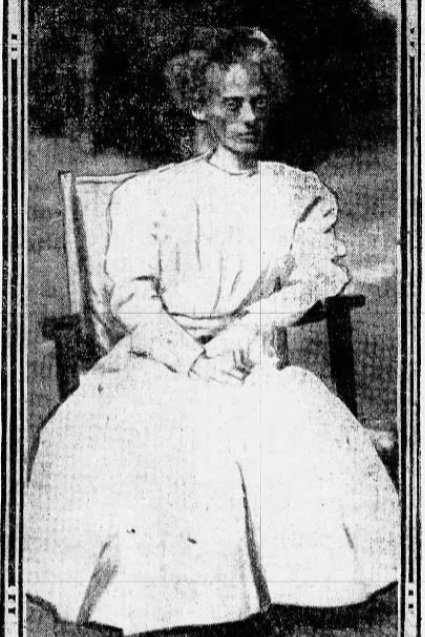
On April 30th, there was a letter sent to Margaret Conway, the sisters' childhood nanny. The letter told her something serious had happened, and were requesting her visit to Olalla. At the time, Margaret was visiting family in Sydney, Australia, and was able to come to Washington about a week after receiving the letter. Linda’s husband met Margaret at the bus station and on their way back he delivered terrible news. Claire had passed away. Once Margaret was able to see Claire’s body, she knew something had been wrong. She said it looked like a totally different person, and she was so, so, skinny. Linda told her that she had died from cirrhosis of the liver, and it was caused by drugs that were given to her as a child, causing her organs to shrink. Margaret didn’t believe a word that she was saying and demanded that she was taking Dorothea back home to her parents. Dorothea was now between 50 and 60 pounds, and explained that she looked like a skeleton, laying in a bed inside of a cabin. However, the Hazzard’s told her that she could not take Dorthea, as they were given power of attorney and were not releasing her from their care. Margaret also saw Linda walking around in Claire’s satin robe and wearing her favorite hat. The Hazzard’s also helped themselves to the rest of her clothes, household items, and at least $6,000 worth of jewels from their family. Margaret snuck out to call the girl's uncle, John Herbet, who came all the way from Portland, Oregon, to save Dorothea from Linda’s crutches. John paid the Hazzard’s around a thousand dollars in order to take Dorothea away from the sanitarium.
FINALLY, JUSTICE IS SERVED… OR SO WE THOUGHT
While Margaret and John helped the police investigate, they soon gathered evidence of many more deaths under the care of Linda Hazzard, and also realized they had been given access to other estates as well. Linda was arrested on August 15th, 1911, and was being charged with first degree manslaughter for the death of Claire Williamson. The following January, her trial began, and Linda told the court that she had done nothing wrong, and the only reason she is being charged right now is due to the fact that she was a woman who’s successful in the medical field, claiming that traditional doctors hated her for her success with natural healing. Linda desperately wanted to take the stand so she could put everyone in their place, but her lawyers were smart and made sure they kept her off the stand. Linda had many people testifying against her, such as nurses and servants who worked under her. They would testify about the harsh treatments she forced upon her patients. Starving them, beating them, and the cries of pain that Claire would scream during the hours of enemas she endured. But she continued to refuse any blame in the death of Claire, or any of her patients at all, as she truly believed in the power of natural healing, and encouraged the jury to read her work, so they could see the beautiful magic she was performing for her patients. However, the jury continued to be against her. Linda had very few people defending her, but her last ditch attempt to keep her out of prison was the husband of her first victim, Daisy. He claimed that even though his wife died under her care, he strongly believed in the work of natural healing, and continued to take his own son, Ivar, to see her a few times after the passing of his wife. However, the jury still remained unmoved. It didn’t take the jury long to find Linda guilty, and she was sentenced to 2-20 years of hard labor at the penitentiary in Walla Walla, and she also had her medical license revoked. However, for reasons unknown, the governor pardoned her sentence just after serving two years. Her medical license remained permanently revoked. Her sentence wasn’t long enough for the amount of lives she has taken. It wasn’t long enough for even just the one death of Claire.
After her release, she and her husband moved to New Zealand so they could be closer to most of their supporters. There she was able to work under the titles: Physician, Dietitian, and Osteopath. She even managed to publish another book based on the powers of fasting. In 1920, the Hazzard’s were able to save enough money to move back to Ohalla and open up a new and improved sanitarium. However, due to her medical license being revoked in the state of Washington, she called her new building a “school of health.” Linda’s sanitarium burned down in 1935, which gave her 15 years to continue starving her patients and killing them. Linda Hazzard died three years later, while doing her own fasting cure to help her feel better when she was suffering from illnesses.

#true crime#true story#truecrime#true crime blog#true crime community#Crime#serialkiller#murder#blog#blogging#blogger#blogpost
13 notes
·
View notes
Text
The Twitter and Block billionaire made Cash App into a $700 million monster. Now police officers, nonprofit critics and current and former employees say it’s struggling to fight “rampant” criminality.
Earlier this year, Kik Messenger user “heyyyydude1” was selling a stash of videos he’d amassed of child sexual abuse. One customer, who said he was a 35-year-old father of two, offered to buy 200 videos for $45. “How do I pay?” he asked.
“Cash App,” heyyyydude1 responded, sending over his payment details and a code for a Cash App referral fee. With each transaction, and many more disturbing videos sent, the seller was unknowingly providing a pile of evidence to an undercover agent with the Immigration and Customs Enforcement’s child exploitation unit. That’s according to government investigators, who claimed that after Cash App and Kik data was subpoenaed, heyyyydude1’s real name and address were revealed to be 33-year-old Philadelphia resident Michael Wilcox. Indicted in April, he awaits trial. His counsel declined to comment.
Current and former police, as well as nonprofits working directly with cops to fight child exploitation, say that such crimes are often happening via Cash App, which brings in billions in gross profit every year for Block, Inc., the Jack Dorsey-run payments giant formerly known as Square. They say that whether it’s to pay for sex with a minor, to send children funds in return for nude images or to traffic a young adult victim, Cash App is often the payment tool of choice. Block says it does not tolerate crime on its technologies and that the company proactively scans transactions for suspicious signals that could indicate criminality, but the claims of illicit use of Cash App are supported by police department data and dozens of cases reviewed by Forbes in which the tool was used to facilitate sex crimes.
Joe Scaramucci, a detective who set up the human trafficking unit for the McLennan County Sheriff's Office in Waco, Texas, says that in his experience, outside of physical cash, Block’s tech is the primary payment tool used by people selling sex, whether they’re trafficking adults or children. Searching a police database of sex ads for “CashApp” in Waco returned 2,200 ads, compared to 1,150 for PayPal and 725 for Venmo, a PayPal-owned rival, according to data provided by Scaramucci. Similar data put together by the Arizona attorney general shows that between 2016 and 2021, there were 480,000 online sex ads where Cash App was listed as a form of payment, nearly double that of nearest rival Venmo at 260,000. For sex traders, “Cash App is king,” Scaramucci said.
Current and former employees are now raising concerns about the company’s investment in keeping Cash App clean, and critics are sounding the alarm over what they claim is Block’s lax monitoring and reporting of myriad criminal behaviors on its popular payment tool. Though it recently launched a Cash App for Teens feature, the company is conspicuously absent from collaborative efforts to fight abuse, failing to provide any tips to the National Center for Missing and Exploited Children (NCMEC), America’s national clearing house for sexual abuse material found on tech platforms. Its primary rival PayPal, the owner of Venmo, has contributed tips to the nonprofit.
“Does Cash App have the appropriate level of staff to deal with this?” Chad Brink, former Arizona attorney general human trafficking investigator
Cash App’s detractors claim criminals are attracted to its lack of thorough identity checks as compared to traditional banks and the ability for those who have abused the app to quickly sign up again. “We’re definitely seeing an escalation of the use of Cash App for a number of reasons. One is that its due diligence is next to none,” says Colm Gannon, a former sex crimes investigator in New Zealand and cofounder of Pathfinder, a police contractor focused on online child abuse.
There’s also the lure of apparent anonymity offered by Cash App, says ex-Arizona attorney general human trafficking investigator Chad Brink. Users only need to reveal their profile name, called a “cashtag,” to receive and send funds. Because it’s possible to shift funds so quickly between accounts—one signal of criminality that Block’s algorithms could detect and flag as suspicious—it’s easier to hide and cash out ill-gotten gains, added Brink. He complained about delays to getting responses from Cash App, taking far longer than rivals, leading him to question whether or not Block has invested in legal compliance in line with its explosive growth. “Does Cash App have the appropriate level of staff to deal with this?” he asked.
Block spokesperson Danika Owsley said that all forms of human trafficking were not permitted on Cash App. She added that the company operated “in line with applicable laws and regulations,” closing accounts and reporting suspicious transactions to police, while working voluntarily with nonprofits, industry and law enforcement.
“We do not tolerate illegal activity on Cash App. We maintain robust compliance programs and continuously assess and enhance our systems and controls to prevent, detect and report bad activity on the platform,” she added.
Launched in 2013 by Block, Cash App quickly became a cash cow for Dorsey, helping him amass a fortune of $4 billion. Competing with PayPal, Venmo and Zelle, it rapidly gained market share by offering a quick, simple and free alternative.
With Block’s market cap currently at $30 billion six years after its IPO, much of its growth is due to Cash App, which makes revenue by charging a small fee for business use, and through its stock trading and cryptocurrency exchange features. In its latest quarterly results, Dorsey’s business revealed that this June, 47 million accounts carried out transactions on Cash App. The business generated gross profit of $705 million in the most recent quarter, up from $624 million in the preceding quarter, accounting for nearly half of Block’s total $1.5 billion in Q2.
But as Cash App has grown in revenue and popularity, so has its use in sex crimes. Hundreds of pages of court filings describe cases where law enforcement said Cash App was used to either pay for sexualized images or sex with minors and adults. Among the filings referencing Cash App were multiple instances where a victim was trafficked on Skipthegames.com, one of the largest sex advertisement websites. That included one recently unsealed investigation where a victim in Grand Rapids, Michigan, was just 17 years old. A search for “Cash App” and “CashApp” on Skipthegames.com collectively returned nearly 900,000 results, compared to 470,000 PayPal and a similar number for Venmo.
In one of the more egregious recent cases, a 26-year-old Asheville, North Carolina, man enticed 15 minor females into either sending him sexually explicit images or having sex with him, typically sending the victim hundreds of dollars over Block’s app. He was sentenced to 28 years in prison. And in another recently unsealed warrant, an FBI agent said the agency had raided the Cash App data of an individual who was suspected of trafficking a 15-year-old runaway in San Diego.
The highest-profile case involving Cash App and alleged sex crimes, though, revolves around Florida Rep. Matt Gaetz. The Justice Department is reportedly investigating whether the Congressman paid to have sex with various women, including a 17-year-old girl. Last year, the New York Times reported that it had reviewed receipts from Cash App and Apple Pay showing payments from Gaetz and an associate—indicted Florida tax official Joel Greenberg—to one of the women. (Gaetz has previously denied any wrongdoing. His spokesman, Joel Valdez, said, “It must be a slow day for Forbes to be covering an 18-month-old debunked news story. We usually don’t comment on those.” Greenberg’s counsel did not respond to a request for comment. He’d previously pleaded guilty to identity theft and sex trafficking of a 17-year-old. )
Got a tip about Block, Inc, Square or Cash App? Do you have additional information about how they deal with criminality on their platforms? We'd like to hear from you. Contact Thomas Brewster at [email protected] or +44 778 237 6697 on Signal.
The cases show how vital Cash App data can be when piecing together evidence of a crime, definitively proving how and when illegal content or services were bought. Cash App is often ordered to hand over user information via search warrants, subpoenas and other court orders, and it has regularly provided data, whether it’s a customer’s name, payment details, geolocation or IP addresses used to access the tool, according to case files reviewed by Forbes. Cash App spokesperson Owsley said the company had a dedicated law enforcement response team to provide information in compliance with local, state and federal laws.
Yet response times can vary. Scaramucci said the last time he filed a request for Cash App data in December 2021, he got it back within 12 days. But Brink claimed the company has become increasingly slow to respond to such requests. He said Cash App often took longer than 30 days to respond, while PayPal and Venmo were much more responsive. “As the Cash App business has grown, there has been significant investment of resources in our compliance organization across all areas of the team and levels of leadership,” Block spokesperson Owsley said in response.
Even though Cash App will turn user data over to the cops, the app is designed so that anyone selling or trading sex can remain anonymous from other users. In a recent post on the USASexGuide.nl forum, a significant resource for people buying and selling sex, a user claimed many sex workers moved to Cash App as a form of protection, having previously been robbed of hard cash. Digital money, in such inherently dangerous situations, was seen as safer than the analog equivalent.
Victims of sex crimes, though, see the flip side of that anonymity. In 2021, Brian shared intimate photos with a woman he met over a dating app. She soon threatened to send the images to his friends and family unless he paid $500 over Cash App. Brian, who asked Forbes not to share his full name, had become the victim of a sextortion attack. After a second attempted payment to the extorter failed, Brian said his Cash App account was permanently disabled.
Now a moderator of a Reddit forum dedicated to helping sextortion victims, he frets about the ease with which a person can set up a new account. “My account was disabled and it took very little effort to create a new one,” Brian told Forbes. “I imagine scammers do the same thing.” Cash App spokesperson Owsley said the company had controls in place to prevent previously removed users from signing up again. She did not elaborate on what those controls were, or explain why Brian’s Cash App account was disabled.
Brian’s experience points to what critics say is the central problem with Cash App: that it doesn’t carry out enough checks on a new user to ensure they’re not someone previously banned, an entirely fake persona or an identity thief using someone else’s personal information to cover their tracks. When users sign up to Cash App, all they have to provide is a phone number or email, along with a zip code. In contrast, PayPal also asks for a full address and employs security checks on its mobile app to verify a user is not a bot. “When Cash App is being used, it's being used without any type of guarantee of oversight,” says former cop Gannon.
One former employee who told Forbes they quit the company, in part, because of concerns over what they alleged to be “rampant” crime on the platform, said that Cash App allows users to create bulk accounts on a single device without any clear limits. That’s potentially attractive to criminals who want to spin up as many scam accounts as possible, so if one gets shut down, they can continue their swindles easily on another. Cash App’s Owsley said she wouldn’t comment further on company controls as it was“proprietary information.”
With Cash App’s gross profits surging by $420 million in just two years, some current and former employees have raised questions about how much Block has invested in solving its crime problem. One former employee said that in the late 2010s, the Cash App compliance division was small, only consisting of a handful of staff and that the level of monitoring of criminal activity appeared lax, with growth more of a concern to leadership than compliance. Whilst the company has built up a larger team in recent years, one current staffer said that when they or colleagues raised issues like sex trafficking and laundering, they were ignored.
Cash App spokesperson Owsley said that Cash App is investing in growing its compliance.
Andrew Marane, a former lead on global investigations at Block between 2017 and 2018, said the company has historically built code to look for unusual patterns and block payments.
“To give you an example, there’s a lot of child exploitation in the Philippines, and they tend to utilize PayPal; they tend to utilize Cash App,” he said. “The minute we start seeing, like $25 to $50, numerous transactions from disparate people going to one account, that’s a good signal and we can pick up on that very quickly.”
Marane and Owsley said the company worked with the U.S. Financial Coalition Against Child Sexual Exploitation (FCACSE), joining trainings by law enforcement and sharing information to combat the crime.
“I think with kids . . . you have an obligation to do something.” Staca Shehan, vice president of analytical services at the National Center for Missing and Exploited Children
Cash App’s problems with criminality go beyond sex trafficking, though. Fraud in particular has long been a big issue for Cash App. In December, Forbes revealed merchants across the U.S. were rejecting Cash App use in stores because of fears over fraud. And in October, Forbes reported Cash App’s European business, Verse, had been ordered by its banking licensee in Lithuania to address money laundering issues or face a penalty.
Cash App said it combines its own in-house detection models with those created by third-party vendors to identify suspicious activity, all of which are audited by third parties for efficacy. Where appropriate, it works with partner financial institutions to prevent criminal behavior on Cash App. It did not provide specific examples.
Block also does not participate in some major anti-child-exploitation initiatives, while rivals do.
Unlike PayPal, Block hasn’t been providing tips about child exploitation paid for on its app to the National Center of Missing and Exploited Children (NCMEC). By law, tech companies that see CSAM spreading on their sites are required to report it to NCMEC, a nonprofit that passes the “cybertips” to the relevant law enforcement agency.
Companies that don’t host content can still provide tips, and PayPal, despite not being legally compelled to share suspicious transactions, is disclosing them: 970 in 2021, 282 in 2020, 322 in 2019. PayPal said it did so voluntarily, and the tips can be used to provide insight into payments that could be associated with CSAM trading that took place on another platform. According to NCMEC, Block hasn’t provided any tips, ever.
Block did not deny it hadn’t provided NCMEC with cybertips, adding that it regularly attended NCMEC-led meetings. Instead, spokesperson Owsley pointed to a partnership with Polaris, a nonprofit that runs America’s national hotline for complaints and tips about any kind of human trafficking. When reached for comment, Polaris said the partnership was at an early stage and limited. PayPal, meanwhile, co-led and helped found Polaris’ Financial Intelligence Unit, which tracks finances of traffickers and helps share that information with law enforcement.
NCMEC’s Staca Shehan, vice president of analytical services at NCMEC, wouldn’t say why Block hadn’t submitted any reports. “At the end of the day, that's a voluntary choice on their side,” Shehan adds. “I think with kids . . . you have an obligation to do something.”
“The potential harm to our reputation are magnified in instances of fraud or unauthorized or inappropriate transactions involving minors . . . ” Block, Inc.
A former senior Justice Department attorney, speaking on the condition of anonymity as he wasn’t authorized to talk on the matter, said the Justice Department often receives tips from tech companies, in particular on child sexual exploitation, terrorism and election interference. The prosecutor, who worked predominantly on major fraud and cybercrime cases in which Cash App was frequently used, said that while he received tips from PayPal and Venmo, he did not get any from Block.
Despite its significant use in crimes targeting kids, Cash App last year launched Cash App Teens, opening up the app to users between the ages of 13 and 17, as long as they get the approval of a parent or guardian. Block, cognizant that it was opening itself up to more exploitation with the new feature, wrote in its recent quarterly financial filing with the SEC: “The risks and the potential harm to our reputation are magnified in instances of fraud or unauthorized or inappropriate transactions involving minors.”
One former employee said leadership had been warned about the lack of age and identity verification for both the child and the adult approving a Cash App Teens account, but they were ignored. In response, Block said parents or guardians were the legal owners of their minor’s account and could monitor activity, turn off access and close the account at any time. It pointed Forbes to the Cash App for families page.
The Teens feature may have promised parents more control over how their kids use the app, but minors have continued to use Cash App and become victims of crimes in the process. According to a recently unsealed search warrant obtained by Forbes, in February 2022 a 14-year-old in Virginia was on Snapchat when she struck up a conversation with a man under investigation for the sexual assault of a 13-year-old. He wanted to buy the minor’s nude images and asked, “How do I pay?”
“Cash App,” the teenager replied.
4 notes
·
View notes
Text

Susana Allen Hunter, Strip Quilt, (cotton (textile), muslin, batting), Wilcox County, AL, 1950-1965 [The Henry Ford, Dearborn, MI]
129 notes
·
View notes
Text
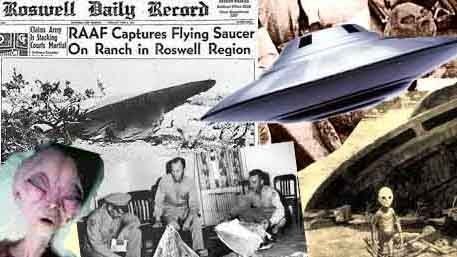
Os 75 anos do Incidente em Roswell: o maior mito da história da ufologia (incluindo notícias da enfermeira que teria participado da autópsia dos corpos)
Com apenas uma semana de intervalo, em 2 de julho de 1947, nasceria o maior mito da história da ufologia. A Base Aérea de Roswell, onde funcionava o 509º Grupo de Bombardeio da Força Aérea, emitiu uma nota à imprensa, elaborada pelo oficial de informação, o primeiro-tenente Walter C. Haut, informando o resgate de um disco voador acidentado. Poucas horas depois, no entanto, o general Roger Maxwell Ramey, sob ordens expressas do general Clements McMullen, do Pentágono, desmentiu tudo. Em uma coletiva à imprensa, o general Ramey explicou que o objeto capturado era, na realidade, apenas um balão meteorológico. O major Jesse Marcel, responsável pelo comunicado oficial, teve de posar para fotos junto aos fragmentos de uma sonda atmosférica, desculpando-se por tê-los confundido com um disco voador. Desde Roswell se ouvem inúmeros outros rumores sobre naves – acidentadas ou abatidas – que teriam sido recuperadas pelos militares. Não faltam os que garantem que o governo norte-americano manteria alienígenas [Extraterrestrial Biological Entities, ou Entidades Biológicas Extraterrestres (EBEs)], alguns mortos e outros vivos, sob sua custódia em bases ou hangares secretos.
Por Cláudio Tsuyoshi Suenaga
Pouco mais de uma semana depois de inaugurada a Era Moderna dos Discos Voadores, nasceria o maior mito da história da ufologia, tanto mais inquebrantável quanto mais se tenta desmontá-lo.
Na noite de quarta-feira, 2 de julho de 1947, sobre a desolada paisagem do Novo México, desencadeou-se uma das piores tempestades elétricas a atingirem a região nos últimos tempos, tempestades essas que ocasionalmente haviam abatido aviões na área. A 46 quilômetros a noroeste da cidade de Roswell, na parte sudeste de Corona, o fazendeiro William Ware "Mack" Brazel (1899-1963) ouviu um estranho estrondo sobre a sua isolada propriedade, mas não deu maior atenção por atribuí-lo a um capricho da tormenta. Na manhã seguinte, a caminho do pasto para inspecionar as suas ovelhas, encontrou espalhados sobre uma área de cerca de um quilômetro de comprimento por várias dezenas de metros de largura, entre diversos materiais, chapas finas, flexíveis e muito leves parecidos com folhas de estanho que não se queimavam no fogo, não riscavam, não rasgavam e restituíam a forma original mesmo depois de amassados, além de pequenas traves (semelhantes a pau-de-balsa e que apresentavam mais ou menos o mesmo peso, embora não fossem de madeira) com cerca de 15 centímetros, cobertas com uma espécie de escrita hieroglífica vertical, parecida com os ideogramas japoneses.
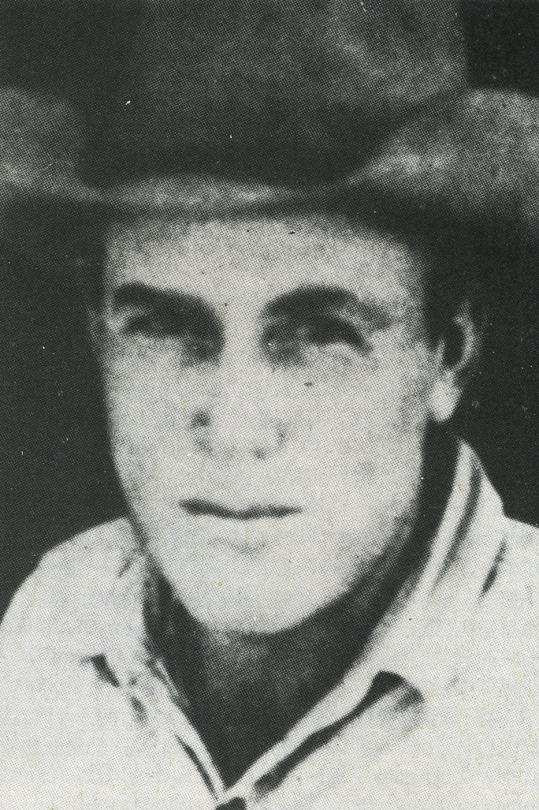
William Ware "Mack" Brazel
No sábado, 5 de julho, Brazel foi à cidade de Corona e lá ouviu histórias sobre discos voadores que andavam sendo vistos por toda a região, e só então começou a pensar que o material que recolhera em sua fazenda poderia ter sido parte de um. O xerife de Chavez County, George Wilcox, foi notificado por Brazel no dia seguinte, e na segunda-feira, 7 de julho, o major Jesse Marcel (1907-1986), oficial de Estado-Maior encarregado do Serviço de Informação da Base Aérea de Roswell, almoçava no clube dos oficiais quando recebeu o telefonema de Wilcox, que lhe pôs a par da história de Brazel. Piloto desde 1928, como um dos poucos cartógrafos familiarizados tanto com o traçado como com a interpretação de mapas aéreos antes da Segunda Guerra Mundial, Marcel foi enviado à escola de espionagem pela Força Aérea do Exército após Pearl Harbor e tornou-se oficial de informação do Primeiro Esquadrão de Bombardeiros e, mais tarde, do grupo inteiro. Voando como bombardeiro, artilheiro e piloto, acumulou 468 horas de combate em B-24 e foi condecorado com cinco medalhas por ter abatido cinco aviões inimigos. No final da guerra, foi chamado a integrar a 509ª Esquadrilha de Bombardeio da Força Aérea do Exército.

Major Jesse Marcel
Naquela tarde de 7 de julho, Marcel recolheu uma grande quantidade do mesmo material já descrito, além de uma de substância que lembrava pergaminho, de cor marrom e extremamente resistente, e uma pequena caixa preta muito leve de aparência metálica que se parecia com uma caixa de instrumentos de qualquer tipo. O breve exame que fez bastou para que se convencesse de que os restos eram parte de um disco voador acidentado. O primeiro-tenente e relações públicas Walter G. Haut (1922-2005), por ordem do coronel (depois general) William H. “Butch” Blanchard (1916-1966),[1] redigiu um press-release, distribuído à imprensa na manhã de terça-feira, 8 de julho: “Os diversos boatos relativos ao disco voador tornaram-se ontem uma realidade quando o Setor de Informação do 509º Grupo de Bombardeio da 8ª Força Aérea, Aeroporto Militar de Roswell, teve a sorte de tomar posse de um disco.”

Walter G. Haut
A notícia, recebida entusiasticamente pela Associated Press e outras agências, foi repetida em numerosos jornais de todo o país e do exterior, inclusive pelo Times de Londres. O jornal Roswell Daily Record estampou na primeira página de sua edição vespertina de 8 de julho esta manchete desconcertante: “RAAF captures flying saucer on ranch in Roswell region”. O texto da matéria dizia que “todos os boatos concernentes aos discos voadores tornaram-se realidade ontem, quando o oficial investigador do 509º Grupo de Bombardeiros da 8ª Força Aérea, teve a sorte de obter a posse de um disco graças à cooperação de um dos granjeiros locais e do gabinete do xerife de Chaves County.”

Decorridas menos de 24 horas, a Força Aérea negou tudo. O general Clements McMullen (1892-1959) teria ordenado a criação de uma história de cobertura para controlar e conter a situação. O general de brigada Roger Maxwell Ramey (1903-1963), comandante do 8º Distrito da Força Aérea sediado em Fort Worth, Texas, ligou imediatamente para o coronel Blanchard, manifestando seu extremo desagrado, assim como o do general de exército Hoyt Sanford Vandenberg (1899-1954), chefe adjunto da Força Aérea, pelo press release, e deu ordens para que os destroços fossem imediatamente colocados a bordo de um B-29.
Imprensado pelos dois generais, Blanchard ordenou ao major Marcel que acompanhasse pessoalmente o material até a Base Aérea de Carswell, em Fort Worth, onde Ramey obrigou-o a posar para fotos junto dos destroços de um balão meteorológico Rawin, enquanto os restos do “disco voador” seguiam para a Base Aérea de Wright-Patterson, em Dayton, Ohio, para “novas análises” determinadas pelo general Vandenberg.
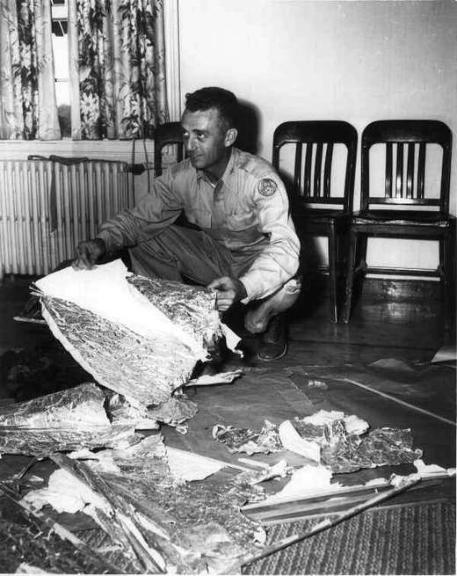
O major Jesse Marcel faz uma expressão um tanto contrariada e marota ao ser obrigado a posar para fotos junto dos destroços de um balão meteorológico Rawin como uma forma de encobrir a história.
Ramey transmitiu pela estação de rádio de Fort Worth um comunicado, apressadamente redigido, assegurando ao público que o disco voador espatifado não passava dos despojos de um balão meteorológico e que tudo havia sido um lamentável erro de identificação cometido pelo major Marcel. Em outubro de 1947, Marcel foi subitamente transferido para Washington, D.C., e em dezembro promovido a tenente-coronel e designado para o Programa de Armamento Especial, encarregado de coletar amostras atmosféricas do mundo inteiro e analisá-las a fim de descobrir se os russos haviam detonado a sua primeira bomba atômica. Quando isso foi confirmado, coube a Marcel a tarefa de redigir o relatório que foi lido pelo presidente Truman perante a nação.
A semelhança dos materiais recolhidos com os dos balões em uso à época naquelas paragens é tamanha que somos inevitavelmente levados a perguntar quais seriam as chances de um autêntico disco voador ostentar características tão compatíveis. Não é mais provável que Brazel e Marcel tenham de fato exagerado e incorrido em erro? Apenas três dias depois da explosão do “disco voador” sobre a fazenda de Brazel, em 5 de julho, os destroços de um balão Rawin alvo, feito de papel e lâmina metálica, foram encontrados no solo pelo fazendeiro Sherman Campbell. Um segundo balão foi encontrado em 8 de julho por David C. Heffner. Em nenhum dos casos houve algo de estranho ou inexplicável em relação aos destroços, logo identificados como balões que de fato eram.
O mito da queda da nave espacial no Novo México, no plano geral, surgiu inspirada pelo clima de histeria provocado pelas primeiras notícias de discos voadores dos tempos modernos, e no plano particular, pelas experiências altamente secretas e sigilosas que se desenrolavam num raio de 150 quilômetros da Base Aérea de Roswell, então a mais importante e mais bem guardada base aérea militar norte-americana, onde funcionava o 509º Grupo de Bombardeio da Força Aérea, o único grupo de bombardeio atômico da época e um dos poucos grupamentos de elite entre os militares daquele país. Justamente ali é que se desenvolvia a maior parte dos programas de defesa pós-guerra no setor da pesquisa atômica, de foguetes e desenvolvimento de mísseis, além de experiências eletrônicas e de radar.
Los Alamos, a ampla comunidade científica criada pelo Projeto Manhattan em 1943 com a finalidade específica de proporcionar mão de obra e instalações necessárias à construção e testes das primeiras bombas atômicas, era ainda, em 1947, uma “cidade secreta”, uma área altamente reservada. Status similar tinha a Área de Mísseis e Terreno de Provas de White Sands, nas imediações de Alamogordo, onde pesquisas de alto nível eram realizadas nos únicos foguetes alemães V-2 capturados deste lado da Cortina de Ferro. E um dos testes com o V-2 foi realizado justamente no dia 3 de julho. Tudo isso nos ajuda a compreender porque naqueles meses de verão de 1947, houve no Novo México mais avistamentos de OVNIs per capita e por quilômetro quadrado do que em qualquer outro lugar do mundo.
O mito de Roswell jamais ficaria completo se corpos de seres extraterrestres não fossem acrescidos aos restos do pretenso “disco voador”. Em fevereiro de 1950, o veterano da Primeira Guerra Mundial e engenheiro civil Grady Landon “Barnie” Barnett (1892-1969), que por vinte anos trabalhara no Serviço Federal de Conservação do Solo até sua aposentadoria em 1957, começou a espalhar entre seus amigos o rumor de que na manhã de 3 de julho de 1947 teria localizado um disco voador acidentado com vários extraterrestres mortos a bordo na Planície de San Agustin, a cerca de 80 quilômetros a oeste da cidade de Socorro, Novo México, onde mais tarde seria instalado um campo de escuta do Observatório Nacional de Radioastronomia pelo fato do local não ser afetado pelas interferências elétricas provocadas pelo homem.

Grady Landon “Barnie” Barnett
Barnett descreveu os seres como sendo do sexo masculino, mas muito pequenos pelos nossos padrões, tendo a cor da pele acinzentada, cabeça redonda completamente calva e desproporcionalmente grande em relação ao corpo e olhos pequenos estranhamente afastados um do outro. Suas roupas eram inteiriças, sem zíperes, cintos ou botões.
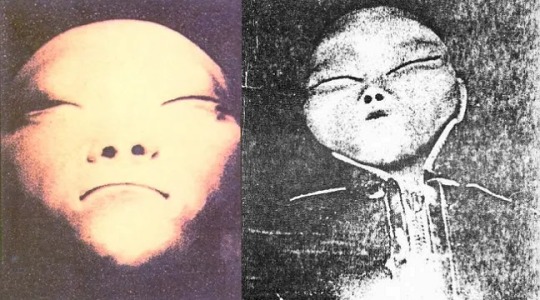
Segundo contou Barnett, enquanto ele e alguns alunos da Universidade da Pensilvânia que lá se encontravam fazendo escavações arqueológicas observavam os corpos, um militar aproximou-se em um caminhão e assumiu o controle da situação. Outros militares se aproximaram e isolaram a área, dando ordens para que não falassem a ninguém sobre o que viam, pois como patriotas deviam permanecer calados... O objeto, com o clássico formato de disco, teria sido logo removido do local do desastre e transportado junto com os corpos em um grande caminhão. Com base nesse frágil relato feito décadas depois por uma pessoa que dizia ter feito parte do círculo de amizades de Barnett, os ufólogos concluíram que o disco voador teria explodido sobre a fazenda de Brazel ao ser atingindo por um raio mas despencado somente em Socorro, a 180 quilômetros de distância.
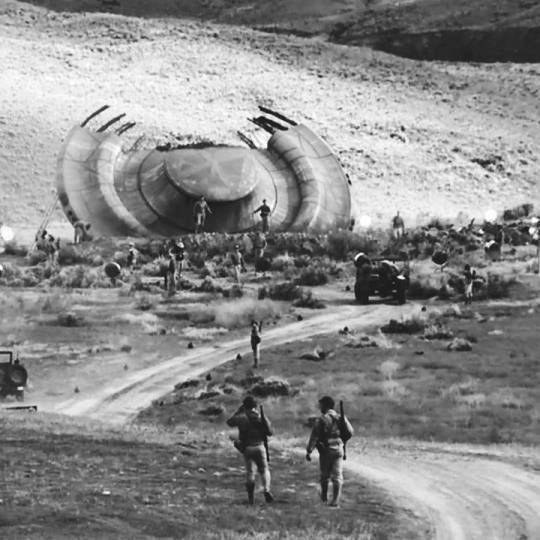
A saga prosseguiu célere mas sem maiores novidades por mais de duas décadas até que, em meados dos anos 70, valendo-se da Lei de Liberdade de Informações [Freedom Of Information Act (FOIA)], os ufólogos impetraram ações judiciais contra o governo norte-americano tencionando desencavar documentos que atestariam o resgate do disco voador e dos corpos dos seres extraterrestres. Em 1977, Marcel, agora tenente-coronel, retomou pessoalmente as investigações do episódio que o ridicularizara perante a nação. Por meio de seus colegas militares, apurou ter havido um acobertamento sem precedentes. Decidiu comparecer a programas de entrevistas na televisão nas quais expôs sua versão, motivando outras pessoas a saírem do silêncio.
Em 1980, o ufólogo William L. Moore e o escritor, linguista, poliglota, arqueólogo e ufólogo Charles Berlitz (1914-2003),[2] um dos maiores responsáveis pela difusão e popularização de mitos atinentes ao continente perdido da Atlântida e ao Triângulo das Bermudas, reavivaram o mito de Roswell com novos e espantosos dados e boatos (oriundos da Base Aérea de Edwards, do Pentágono, da sede da CIA em Langley, na Virgínia, etc.) em seu livro Roswell Incident (Incidente em Roswell).[3] Quase tudo ou o pouco de concreto que se sabe sobre o Caso Roswell provém dessa fonte, de longe a mais consultada e citada por ufólogos, jornalistas, produtores de TV e cineastas por conter transcrições de entrevistas realizadas por Moore com testemunhas da queda do disco (entre eles o major Jesse Marcel) que ainda estavam vivas à época (final dos anos 1970) e por preencher com arguta e “sóbria” imaginação as inúmeras lacunas. Moore e Berlitz foram os primeiros a trazer detalhes sobre a suposta autópsia que teria sido feita nos corpos dos ETs resgatados e a insinuar que eles estariam sendo mantidos preservados em lugares como o famoso galpão Hangar 18, na Base Aérea de Wright-Patterson, na cidade de Dayton, estado de Ohio.
A versão resumida de Moore e Berlitz para o Caso Roswell, reconstituído com base no que apuraram, é a de que entre 21h45 e 21h50 do dia 2 de julho de 1947, o que parecia ser um disco voador sobrevoou Roswell, rumando para noroeste a grande velocidade. Em algum ponto ao norte de Roswell, o disco encontrou uma tempestade elétrica, fez uma correção no rumo, seguindo para sul-sudoeste, acabou atingido por um raio e sofreu graves avarias. Uma grande quantidade de destroços caiu ao solo, mas o próprio disco, embora avariado, conseguiu permanecer no ar o tempo suficiente para transpor as montanhas antes de se espatifar no solo, na região a oeste de Socorro, conhecida como Planície de San Augustin, em Catron County, próximo ao local onde Barnett estava escalado para fazer uma avaliação na manhã seguinte e onde os estudantes de arqueologia deveriam iniciar uma escavação. Os militares assumiram o controle mais rapidamente do que no primeiro devido à demora entre o momento em que Brazel descobriu os destroços e quando por fim deu parte às autoridades. Embora a sequência de acontecimentos de San Augustin precedesse de vários dias a da fazenda de Brazel e de Roswell, o vazamento de notícias foi abafado com mais eficiência e a chegada de informes aos meios de comunicação foi lenta e vaga, no melhor dos casos. O grupo militar (composto, segundo estimativas exageradas, de cerca de cinco mil homens) que esteve no local de San Augustin para isolar a área, teria vindo da Base Aérea de Alamogordo, nos Campos de Testes de White Sands. Os destroços teriam sido levados para a Base Aérea de Wright Patterson e guardados no interior do “Hangar 18”.
Barry Goldwater Morris (1901-1998), major-general da USAF, senador do Partido Republicano pelo estado do Arizona (1953-1965, 1969-1987) e candidato à Presidência dos Estados Unidos em 1964, conhecido como “Senhor Conservador”, teve negado o acesso – por não possuir o nível necessário de autorização clearance (liberado, desobstruído) – quando procurou inteirar-se do assunto. Goldwater declarou que há muito desistiu de entrar no Salão Azul da Wright-Patterson, “pois colecionei uma longa série de negativas, vindas de um chefe após outro. Este negócio ficou tão secreto [...], que é impossível conseguir qualquer informação sobre ele.”
As reiteradas negativas governamentais geraram efeitos contrários. O consenso favorável tendeu a crescer à medida que os setores responsáveis pelo seu esclarecimento se esquivavam. Ao longo da década de 90, o mito de Roswell se mostrou mais vivo do que nunca. Imagens em preto e branco de uma suposta autópsia em corpos alienígenas, uma farsa melancólica comercializada pelo produtor inglês Ray Santilli, foram veiculadas em meados de 1995 pela internet e pelas emissoras de televisão à guisa de subproduto dessa celeuma. Aproveitando tamanha publicidade, os moradores de Roswell capitalizam os dividendos. Na cidade, não há nada que não contenha alguma referência a discos voadores e até um museu dedicado ao tema foi construído.
Ao ensejo das comemorações do cinquentenário, a USAF reconheceu afinal que um artefato explodiu a noroeste de Roswell. Anteriormente, em julho de 1994, a USAF havia liberado um relatório repleto de lacunas intitulado The Roswell Report: Fact vs. Fiction in the New Mexico Desert (O Relatório Roswell: Fato versus Ficção no Deserto do Novo México). No relatório Caso Encerrado,a USAF confirmou a autenticidade dos relatos das testemunhas que viram os destroços que, longe de serem de outro planeta, eram balões de polietileno, material que brilha intensamente e muda de cor ao passar pelo horizonte e ser atingido pela luz solar pouco antes do amanhecer. [4]
Os balões carregavam um protótipo da sonda Viking no formato discóide e recuperada no lugar exato do disco voador acidentado, em San Agustin. Os destroços em Roswell, na fazenda de Brazel, eram fragmentos de balões do Projeto Mogul, equipados com instrumentos para espionar, via radar, explosões nucleares e lançamentos de mísseis e foguetes da União Soviética.

O que pareceu às testemunhas corpos de extraterrestres mortos espalhados no solo de San Agustin, eram bonecos usados em saltos de paraquedas a altitudes superiores a 30 quilômetros, os quais simulavam o resgate de astronautas em voos espaciais. Os danos sofridos na queda deixaram os bonecos com o aspecto estranho que as testemunhas descreveram – olhos enormes, quatro dedos, um só braço. O “extraterrestre” que muitos disseram ter visto entrar, caminhando, no Hospital da Base Aérea de Roswell, era o capitão da aeronáutica Dan Delton Fulgham (1927-2015), que em 1959 sofrera um terrível acidente que o deformara.
A União Soviética saiu à frente na corrida espacial com o lançamento do Sputnik em 1957. Os Estados Unidos trataram de recuperar o tempo perdido e aceleraram o programa Corona, que fracassou em dez tentativas de lançamento do satélite Discover entre 1949 e 1960. Surgiu então a ideia de lançar satélites a partir de um balão de alta altitude. A primeira tentativa falhou, mas em 11 de abril de 1960, o Discover 12 ejetou uma cápsula que completou uma órbita em torno da Terra. A partir daí, os Estados Unidos ultrapassaram a União Soviética. Entre as naves estavam as sondas Voyager-Mars, cujos formatos eram iguais às dos discos voadores. Muitas sondas eram recuperadas em White Sands, Novo México, o que explicaria os tantos OVNIs avistados na área. O livro The Truth about the UFO Crash at Roswell (A Verdade sobre o OVNI Acidentando em Roswell),de Kevin D. Randle (1949-) e Donald R. Schmitt (co-diretor do CUFOS), estampou o desenho de um dos discos voadores avistados, em forma de delta.[ 5]É exatamente igual ao balão Vee, lançado em março de 1965 da Base Aérea de Holloman, Novo México.
Faltou explicar porque o agente funerário Glenn Dennis foi consultado por um pediatra do Hospital de Roswell – possivelmente Frank B. Nordstrom (1925-2017), embora Dennis não tenha perguntado seu nome – sobre o preparo de caixões para crianças e o embalsamento de corpos que teriam ficado muitos dias expostos ao ambiente. Dennis contou ter encontrado uma apavorada enfermeira, Naomi Maria Selff, de St. Paul, Minnesota, que lhe confidenciou a participação nas autópsias de pequenos e estranhos corpos. A enfermeira, “obrigada a guardar silêncio”, foi transferida para a Inglaterra uma semana após o Incidente em Roswell e dada como morta num suspeito “acidente” aéreo.
Mas ninguém conseguiu encontrar uma enfermeira com esse nome, ou uma enfermeira de St. Paul, ou uma enfermeira que foi
transferida para o exterior. Posteriormente, houve especulações de
que Dennis ainda não deu seu nome verdadeiro. Em entrevistas posteriores, ele se recusou a confirmar que Selff era o nome da enfermeira. Alguns investigadores que passaram muito tempo tentando encontrar essa enfermeira, chegaram a conclusão de que ela nunca existiu.
A Força Aérea Norte-Americana, no entanto e quem diria, identificou a enfermeira. Eles descobriram que a tenente Eileen M. Fanton, uma enfermeira que combinava com a descrição física de Dennis e trabalhava na base militar de Roswell, mais tarde partiu em serviço na Inglaterra e recebeu cartas através de um endereço da APO (Army Post Office) em Nova York. Ela não foi transferida diretamente para o exterior de Roswell, mas deixou Roswell repentinamente
em 4 de setembro de 1947, cerca de 2 meses após o Incidente de Roswell, supostamente devido a uma "condição médica" não especificada. Ela foi de Roswell para um hospital no Texas para tratamento, e apenas alguns anos depois serviu no exterior, de 1952 a 1955, época em que poderia ter escrito para Dennis, como ele afirma.
A Força Aérea jurou serem essas as verdades finais – divulgadas porque não mais representavam perigo para a segurança nacional –, gastando para tanto 231 páginas que de nada serviram para demover a arraigada crença dos ufólogos. Ao longo de julho de 1997, mais de dez mil pessoas peregrinaram pelas ruas “sagradas” de Roswell, convertida em Meca pós-moderna.
Notas
[1] No final da Segunda Guerra Mundial, Blanchard havia sido encarregado de preparar e supervisionar os detalhes da operação de transporte da bomba atômica até Hiroshima. Herói de guerra condecorado, depois da Segunda Guerra, como comandante do 509º Grupo de Bombardeios, foi designado para participar da “Operação Crossroads”, que realizou testes atômicos no Atol de Bikini.
[2] Neto de Maximilian Delphinus Berlitz, o fundador das Escolas de Idiomas Berlitz, Charles foi educado em quatro idiomas e chegou a dominar cerca de 32 línguas diferentes, sendo considerado pela People’s Almanacum dos 15 maiores linguistas do mundo.
[3] Berlitz, Charles & Moore, William L. Incidente em Roswell,Rio de Janeiro, Nova Fronteira, 1980.
[4] Falcão, Lorem. “O UFO que iludiu Roswell”, in Manchete,Rio de Janeiro, Bloch Editores, nº 2.362, 12-7-1997, p.26-31.
[5] Randle, Kevin D. & Schmitt, Donald R. The Truth about the UFO Crash at Roswell, New York, Avon Books, 1994.
#roswell#roswell new mexico#ufologia#ufology#discos voadores#fenomeno ovni#ovni#enfermeira#autopsy#ancient aliens#alienigenas#ufo phenomenon
2 notes
·
View notes
Text

Susana Allen Hunter, Pig Pen Quilt, (cotton (textile), denim, batting), Wilcox County, AL, 1950-1955 [The Henry Ford, Dearborn, MI]
1 note
·
View note